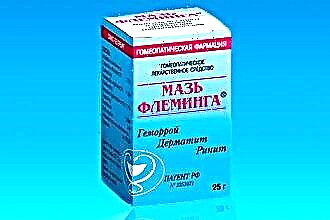Approximately one third of all otolaryngologist patients complain of diseases of the nasal cavity and paranasal sinuses. It would seem that this organ is not vital. However, even a minor malaise can distort plans for the foreseeable future. Therefore, do not underestimate the nose. It performs a fairly large number of functions - it makes it possible to breathe fully, enjoy aromas, moisturizes and warms the air that enters it, cleans it of dust particles. It is actually a very complex and subtle system. Diseases of the nose, unfortunately, are not uncommon today. This is most often due to the invasion of harmful bacteria and other disease-causing particles.
Varieties of diseases
 The inside of the nose is lined with an extremely thin mucous membrane. If it is in order, then it is quite successfully coping with its protection function. Small cilia located on it trap impurities that come along with the air. Special mucous glands are active helpers in the fight against harmful microorganisms. However, the mucous membrane does not always perform its functions equally well. The reason for the temporary deterioration of its work may be a weakened immune system or a deficiency of vitamins. Then pathogenic particles, bypassing the mucous membrane, enter the body. And the risk of getting nose disease increases significantly. If you do not treat them on time, you can "earn" a chronic disease of the nasal cavity.
The inside of the nose is lined with an extremely thin mucous membrane. If it is in order, then it is quite successfully coping with its protection function. Small cilia located on it trap impurities that come along with the air. Special mucous glands are active helpers in the fight against harmful microorganisms. However, the mucous membrane does not always perform its functions equally well. The reason for the temporary deterioration of its work may be a weakened immune system or a deficiency of vitamins. Then pathogenic particles, bypassing the mucous membrane, enter the body. And the risk of getting nose disease increases significantly. If you do not treat them on time, you can "earn" a chronic disease of the nasal cavity.
Diseases of both the nose and the surrounding sinuses appear for various reasons. They can be caused by infectious diseases, the individual structure of the organ, injuries, malfunctions in the functioning of various organs, neoplasms.
Consider what they are.
- Congenital pathologies. Quite widespread. Many people have a slight curvature of the nasal septum. True, it is considered a variant of the norm, if it does not provoke the onset of diseases. Occasionally, however, otolaryngologists are faced with more severe deformities that prevent the nose from functioning properly. Curvatures of the nose, fistulas, narrowed nasal passages and a number of other anomalies can cause chronic diseases. It is possible to correct congenital pathology only by surgery.
- Diseases of a traumatic nature. Injury to the nose is one of the most common reasons for visiting an otolaryngologist. It can be closed, open and combined, with and without displacement of bone fragments. The outer parts of the nose can be deformed or remain unchanged during injury. Even in the case when the bones are intact, the injury is accompanied by swelling, which sometimes turns into a hematoma of the nasal septum.
- Infectious diseases. This category of nasal ailments is the most common. It has many different diseases. Mostly of an inflammatory nature. First of all, these are various types of rhinitis, sinusitis (sinusitis, ethmoiditis, frontal sinusitis), furunculosis, polyposis and a number of others. Since it is with them that otolaryngologists most often encounter, we will dwell on them in more detail.

All nose problems have similar symptoms that signal a malfunction in the body. These common signs, characteristic of most ailments, are represented by:
- unimportant state of health, which accompanies a significant decrease in performance;
- dryness of the mucous membrane in the nasopharynx;
- itchy nose;
- paroxysmal repeated sneezing;
- partial loss of smell;
- temporary hoarseness of the voice;
- separation of viscous sputum;
- nasal discharge of varying intensity.
If you notice the listed symptoms in yourself, it is not recommended to postpone treatment. Otherwise, the diagnoses made by the doctor can turn into chronic diseases.
Note that the severity of each symptom is highly individual. It also depends on the stage of development of the pathological process.
What do the nasal cavities suffer from?
Allergic rhinitis
It occurs when the mucous membrane becomes inflamed due to allergies in the nose. The disease manifests itself with unpleasant itching and obsessive sneezing. These signs are often accompanied by congestion and swelling, which interfere with proper breathing.
 Often, a disease of the nose is manifested in children and young people. This disease of the mucous membrane of both the nose and the paranasal sinuses has two varieties: seasonal and year-round. Seasonal rhinitis usually occurs as a reaction to pollen, and year-round rhinitis is caused by a household allergen (such as a pet, household chemicals, or dust).
Often, a disease of the nose is manifested in children and young people. This disease of the mucous membrane of both the nose and the paranasal sinuses has two varieties: seasonal and year-round. Seasonal rhinitis usually occurs as a reaction to pollen, and year-round rhinitis is caused by a household allergen (such as a pet, household chemicals, or dust).
Vasomotor rhinitis
This ailment occurs when the blood vessels located in the nasal cavities lose their tone. It is characterized by a constant feeling of fatigue, general weakness, lack of appetite, decreased ability to work and headache. In the absence of the necessary treatment, there is a gradual deterioration in lung ventilation and dysfunction of the heart. Distinctive symptoms:
- overdried mucous membrane;
- lost sense of smell;
- snot.
Most often, vasomotor rhinitis is the result of an acute viral infection transferred to the legs. It can also be provoked by any pungent smell (even a new perfume). Sometimes it occurs after severe stress or severe emotional distress.
This disease is treated with various methods aimed at strengthening blood vessels - ultraviolet radiation or ozonation. It is good to supplement them with inhalations with saline.
Ozena
 In this disease, the nasal mucosa is affected. It proceeds chronically. Ozena can be suspected by the following signs:
In this disease, the nasal mucosa is affected. It proceeds chronically. Ozena can be suspected by the following signs:
- constant dryness in the nasal passages;
- lost sense of smell;
- dry crusts that clog the nasal passages and which must be constantly removed;
- decreased hearing acuity;
- noise in ears.
However, the most important and most unpleasant symptom of this ailment is the stench emanating from the nose. As a rule, an ozeny-suffering person does not feel it. But those around him feel it perfectly. Sometimes the smell can be so unbearable that the sick person is simply avoided so as not to pinch his nose in his presence.
The final diagnosis can only be made by an otolaryngologist after a rhinoscopy. Treatment of this disease is symptomatic. It consists in carrying out moisturizing inhalations and mechanical cleaning of the nasal cavities from the crusts emitting a stench. In rare cases, surgery is prescribed to narrow the dilated nasal passages.
Pathology of the nasal septum
Curvature of the nasal septum
The doctor makes such a diagnosis if the nasal septum deviates from the midline to the right or left. The reasons for the occurrence of such curvatures are:
- physiological;
- traumatic;
- compensatory.
 Curvatures of physiological origin appear due to the growth of bones, traumatic - due to a mechanical injury (often with a fracture), and compensatory - due to a decrease or increase in the size of the nasal cavities. Sometimes the curvature of the compensatory type is formed with rhinitis and polyposis. A person should be made to think about such a pathology by the presence of dryness, snoring, difficulty breathing, the appearance of sinusitis and a change in the shape of the nose.
Curvatures of physiological origin appear due to the growth of bones, traumatic - due to a mechanical injury (often with a fracture), and compensatory - due to a decrease or increase in the size of the nasal cavities. Sometimes the curvature of the compensatory type is formed with rhinitis and polyposis. A person should be made to think about such a pathology by the presence of dryness, snoring, difficulty breathing, the appearance of sinusitis and a change in the shape of the nose.
This pathology is treated only by surgery. The operation is performed by a qualified surgeon in a hospital setting.After such an intervention, a person fully recovers in 2-3 weeks.
Polyposis
The appearance of polyps on the nasal mucosa is usually preceded by its prolonged irritation. Usually the cause of their occurrence is a banal allergy. Solitary polyps are rare. Most often, the mucous membrane is occupied by whole colonies of polyps of various shapes. If they are of allergic origin, the risk of relapse increases significantly.
The main symptoms of polyposis:
- difficulty breathing through the nose;
- headache;
- poor sleep quality;
- stuffy ears;
- reduced sense of smell.

In the process of rhinoscopy, the doctor fixes edematous formations on the leg of a pale bluish color. If the polyps are accompanied by purulent inflammation of the paranasal sinuses, the removal of the first occurs with the simultaneous large-scale opening of the second.
If it is determined that the polyposis is due to an allergy, the patient is prescribed desensitizing therapy, and the neoplasms are removed.
Septal abscess
Usually appears after an injury, when a hematoma begins to fester. Sometimes the reason is the spread of infection from boils or diseased teeth. Symptoms of this disease are expressed by a general deterioration in well-being, increased body temperature, intense pain and respiratory failure.
The diagnosis is established after rhinoscopy and a thorough history taking. Treatment is provided only for surgery.
It is extremely important to have the operation done early, even at the first symptoms. Otherwise, the infection can affect the meninges and tissues. A person recovers after the intervention for 8-12 days.
Inflammation of the paranasal sinuses
Sinusitis
This is the name of a disease of the nose, in which its sinuses become inflamed. Sinusitis can develop after infection, due to trauma, disorders in the immune system, improper structure of the sinuses, as well as the proliferation of adenoids and polyps.
 It manifests itself:
It manifests itself:
- severe nasal congestion;
- high intensity girdle headache;
- febrile body temperature (38-39 ° C);
- loss of smell.
This disease and sinuses of the nose, and its courses are treated by puncturing the first and taking antibiotics. Doctors categorically forbid treating sinusitis at home without first consulting a specialist. After all, this ailment can become chronic and provoke complications dangerous to health and life: otitis media, meningitis and sepsis.
Ethmoiditis
This disease can be talked about when the lining of the ethmoid sinus becomes inflamed. It is located near the eye socket and arteries. Ethmoiditis occurs as a result of infection of the nasal cavities with bacteria or viruses. The disease is characterized by the following symptoms: high fever, painful sensations in the nose, redness of the eyes and decreased visual acuity. But any discharge from the nose is often absent. And this complicates the formulation of the correct diagnosis.
The disease is diagnosed using computed tomography (CT). They are treated with antibiotics, as well as anti-inflammatory drugs and drugs for vasoconstriction. In difficult cases, endoscopic surgery is performed in a hospital setting.
Frontit
This is an inflammation of the mucous membrane in the frontal sinus. It appears due to infection of this sinus with a virus, bacterium or fungus. With a front, a person suffers from:
- pain over the eyebrows of high intensity, which cannot be relieved by drugs;
- increased body temperature;
- general weakness.
The disease is diagnosed by means of computed tomography. The disease is treated according to the same protocol as ethmoiditis - with antibiotics, vasoconstrictor and anti-inflammatory drugs. In difficult cases, the doctor performs an endoscopic operation in a hospital setting. Discharged 1-2 days after the intervention.
Diseases of the external nose
Folliculitis
This is the name of a disease in which the hair follicle becomes inflamed. As a rule, this happens after hypothermia or due to infection with harmful microorganisms. The characteristic signs of the disease are small painful blisters and incessant itching.
 With folliculitis, the general state of health practically does not suffer. In addition, this disease is not dangerous for human life. And yet, if you see a doctor too late, neglected folliculitis can lead to a complication in the form of furunculosis. Therefore, you need to contact the doctor early. Only local treatment will be prescribed - lotions and compresses.
With folliculitis, the general state of health practically does not suffer. In addition, this disease is not dangerous for human life. And yet, if you see a doctor too late, neglected folliculitis can lead to a complication in the form of furunculosis. Therefore, you need to contact the doctor early. Only local treatment will be prescribed - lotions and compresses.
Furunculosis
This is an inflammation of the hair follicles in the nose, complicated by the discharge of pus. Boils appear in the nasal vestibule of the nose, because only there are follicles.
The disease occurs in most cases due to the ingress of harmful microbes on the mucous membrane. It must be treated under medical supervision. Frivolity in this case is unacceptable.
If independent attempts to get rid of furunculosis are unsuccessful, the infection can enter the bloodstream and provoke brain tissue infection. You should immediately contact an otolaryngologist who will open the boil and prescribe dressings.
Rinophyma
It is an acne disease that affects the skin of the nose and is severe. The surface of the nose is covered with very large blackheads, which tend to spread. Touching them is painful enough. If you press on the blackheads, a lot of fetid pus will come out. In difficult cases, due to rhinophyma, the shape of the nose may change.
This ailment is treated promptly. Before the intervention, it is necessary to consult three specialists at once: an otolaryngologist, a dermatologist and a surgeon.
Let's summarize
 There are a large number of diseases of the nose. Many of them have such similar symptoms that it is not even worth trying to diagnose yourself. Especially if the child is sick. You should seek help from an experienced specialist who will help you cope with the illness that has overtaken you.
There are a large number of diseases of the nose. Many of them have such similar symptoms that it is not even worth trying to diagnose yourself. Especially if the child is sick. You should seek help from an experienced specialist who will help you cope with the illness that has overtaken you.
Regardless of the degree of complexity of the disease, its treatment should be strictly individual. There is no one-size-fits-all recipe.
The doctor will first make a visual examination to carefully examine the symptoms. But then he will still send him to the rhinoscopy procedure. And only after that he will make a diagnosis. The doctor selects the course of treatment, taking into account the age and characteristics of the body. If you treat diseases of both the external nose and its inner part in a timely manner, this will be an excellent prevention of their complications.



